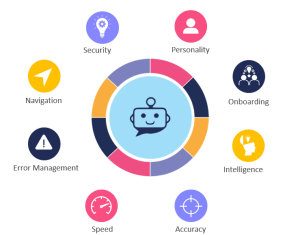Today’s workplaces cater to employees with open office spaces, staff retreats and flattening organizational hierarchies. But attempts to engage employees as more than clock punchers continue to fall short.
A recent Gallup poll found more than two-thirds of employees in the U.S. are disengaged from their work and are simply putting in their time. Gallup also found that dispirited employees cost the U.S. economy up to $ 550 billion in lost productivity every year. The enormous waste of human potential from workers who lack enthusiasm for their jobs reveals a tragic disconnect between employees and management.
Why are attitudes in the American workplace so dismal? The most sweeping explanation is that employers assume a salary and benefits package alone can motivate employees. But employees want more from work than simply a way of providing for their basic needs. They want to satisfy their need to feel esteem, to have a connection with coworkers and to find self-fulfillment.
Workers entering today’s business environment want to understand themselves, their work and the world around them at higher levels of complexity. To compete, organizations must inspire people to become invested in what they’re doing. This notion of fulfilling individual potential as a way to achieve organizational potential has gone from “soft stuff” in an organization to “we need to figure this out.”
In order for organizations to engage and motivate employees around a shared meaning, they must adopt new principles for empowerment.
- Ask “meaning-full” questions.Employees may never before have contemplated the question: “What do I believe matters most to the organization — and is there a connection between that and the tasks I do each day?” When you ask these questions, employees are more likely to look for meaning in their work. This steers people beyond seeking authority-based meaning and into a new stage of curating their own meaning. Instead of offering only what is asked of them, they have to look at their roles, their contributions and their motivations.
- Change the conversation.Just changing the conversation to how everyone in the organization can fulfill their potentials makes people more open and curious about the meaning in their work. They’re more likely to re-examine what contribution they’ve actually been making through their respective roles. The very act of engaging people in this type of dialogue changes the way they think about their company and their job. On a cognitive level, the process of examining the organizational meaning begins the process of evolving it.
- Tie in questions about meaning.Organizational and team leaders can conduct conversations around individual meaning tied to the employees tasks, the organization’s performance indicators and providing value to customers. Just as a leader might ask, “How much will this cost?” and, “Who makes the decisions?” they can also pose the question, “How do you serve your pursuit for meaning through this?” As these conversations unfold, employees take more responsibility for finding meaning and fulfilling their potentials through their contributions. This reduces the burden of management to direct employee actions and motivate their performance. It also explicitly reinforces the way that meaning is shared while also fulfilling the potential of the organization.
- Emphasize each individual’s role.Just like a musician in an orchestra, each person in an organization puts forth his or her best performance in pursuit of the organization’s best performance. All are on the journey together. Employees’ relationship with the company is a healthy immersion. They don’t see their identities as wrapped up in the company, but see the company as a place where they can contribute to something bigger than themselves.
- Develop competencies for meaning.Markets don’t change because of numbers; they change because people change — in their habits, their preferences and their appetites — usually in response to very human motivators like fear, growth and curiosity. But without developing competencies for meaning, we’re hobbled from dealing with that truth. Human language, and meaning language, taps that place where the whole person is engaged. That’s when we focus not on the answers, but on the possibilities. We connect with sales numbers, but also with what our customers want and need as people. It allows us to bring a new dimension to the conversation — not simply from an attitude of providing skills and ready information, but also the human element with empathy and imagination.
(60)







